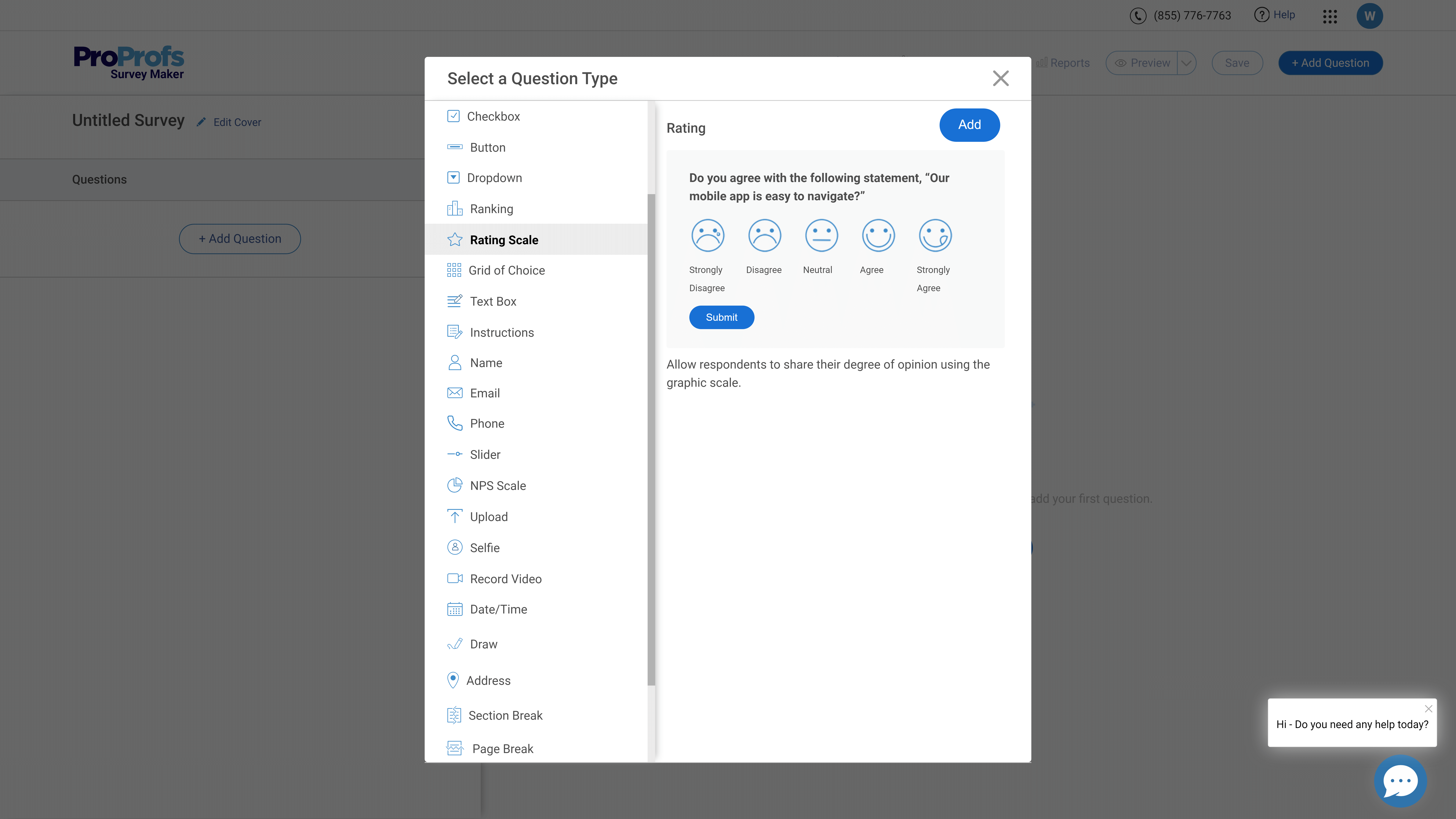Employee Development is a strategic tool that helps your business continually grow by increasing your employee’s engagement and productivity. This is done through committing to support their professional development and personal growth.
Employee development plans provides a key method of success in developing your employees. This is where a set route determining how an employee can achieve their goals is identified. There are other ways that correspond with employee development plans that can support and help grow your business.
Watch our Employee Development webcast for a more detailed explanation here
What is Employee Development? ℹ️
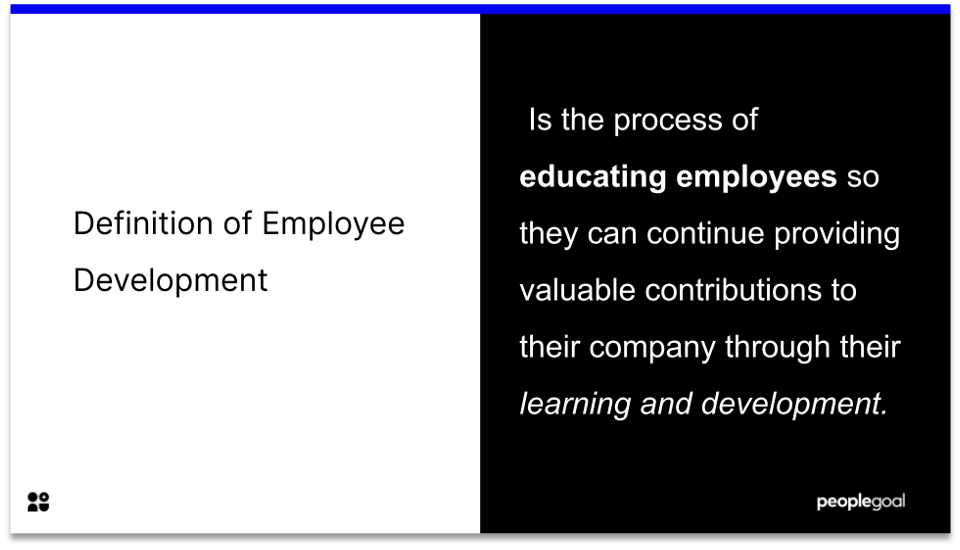
Employee development can also be referred to as, professional or career development. It is the use of training to improve an employees skills and grow their knowledge. It aims to nurture their career path.
While employee development is optional, it is recommended for employers to encourage the participation in both internal and external learning opportunities. This allows for a cooperative effort between both parties making employees feel supported.
Most companies use employee development plans which are a roadmap tailored and created for each employee by the Human Resources department. It will need to suit each employees needs, abilities and interests – keeping the plan as unique as its owner.
Employee development programs need to update the training and development they offer regularly. This is due to new technology and strategies continuously being introduced into the work environment. This creates employees who are up to date with all the relevant skills necessary to perform well in their roles.
Need some help running an effective employee development plan? Read our support article here 👈
Benefits of Employee Development ✅
Employee development is a long-running initiative that can provide both short-term and long-term benefits. While it does require the investment into employees through time, money, and effort, these are usually returned through the following benefits amongst others.
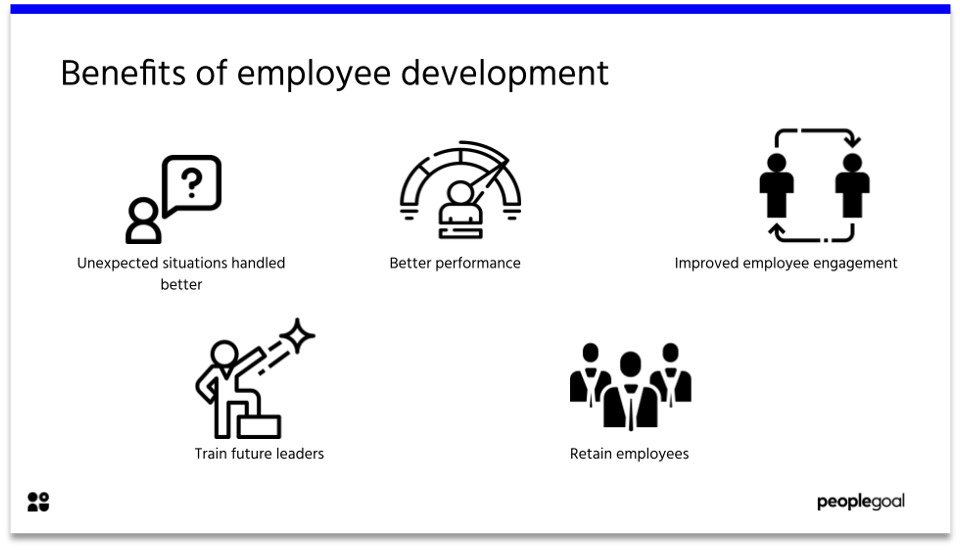
1. Unexpected situations handled better
Today’s working environment is constantly changing. Therefore, by keeping your team members prepared as possible through training, they can handle these unexpected situations more efficiently. This provides valuable benefits to your business by enabling quick and effective responses.
2. Better performance
Employee development improves the performance of employees. This is through an increased job satisfaction, increased confidence, and the development of more skills through continuing education.
It helps to put resources into underperforming employees and they can be identified through performance reviews and feedback.
3. Improved employee engagement
Employee engagement is at the top of most business strategies as it helps promote loyalty, motivation, and productivity. When employees have the option to develop their career they tend to be much more optimistic which leads to improved engagement. This also leads to higher levels of job satisfaction, which increases employee retention.
Gallup found that there is an 11% increase in profitability in Organizations that have made a strategic investment in their employee development. These comapnies are also twice as likely to retain their employees.
Learn how to easily track employee engagement here 👈
4.Train future leaders
Employee development allows you to identify high performing employees you would like in your companies senior roles in the following years. It allows you to develop the right people for the job and saves you money on hiring and training new leaders. Another benefit, as identified by Forbes, is that these effective leaders will be loyal to the company due to you committing resources into their future.
5. Retain employees
By using employee development plans you are keeping your workforce strong and limiting the amount of employee turnover. This saves both money and resources for your business. Employee retention also helps stabilise your workforce by allowing teams to build trust between one another.
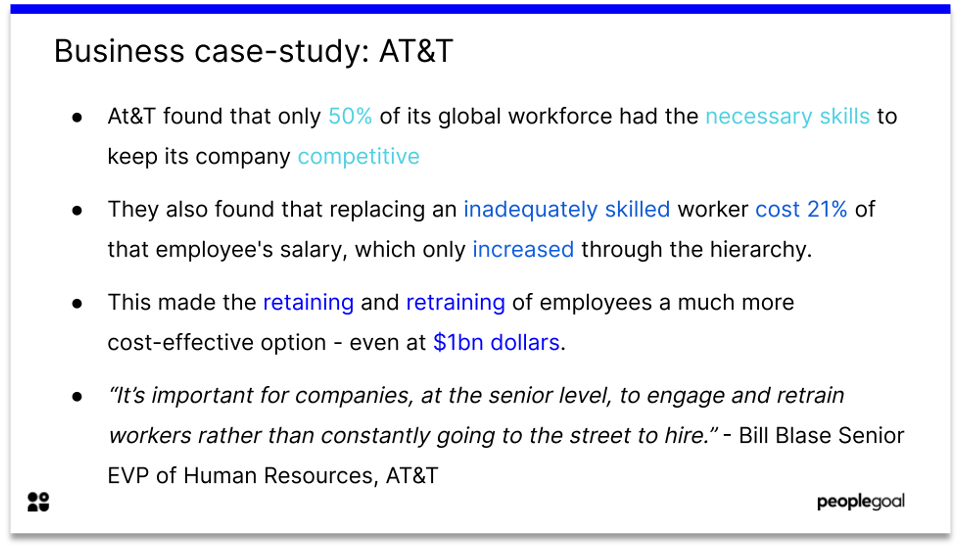
Top 5 Ideas for Employee Development 🔝
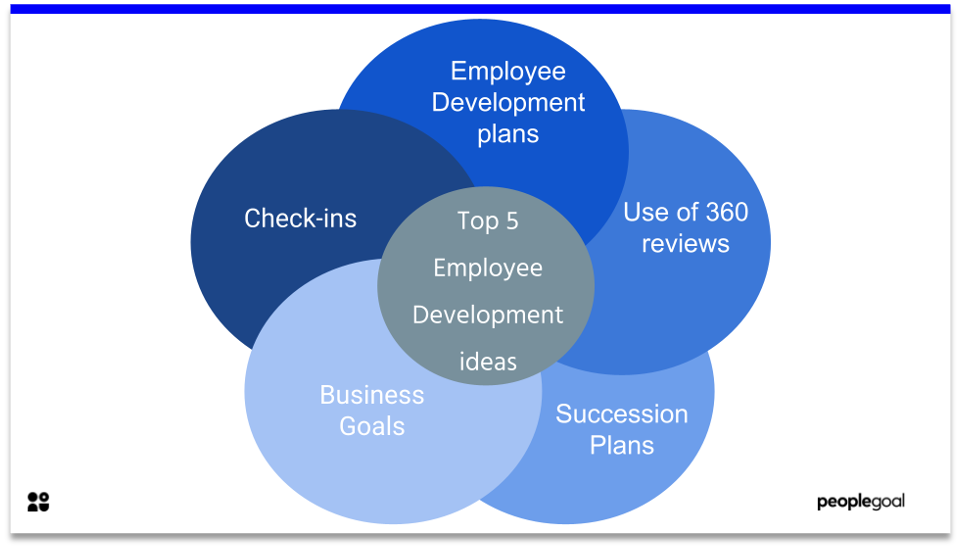
1. Employee Development plans
Use individual development plans (IDP) to document an employees learning and development outcomes. IDP’s also are useful in providing support and highlighting ways their goals will be met. Use a mixture of short-term and long-term goals to maintain a commitment to the plan throughout the year.
By establishing definitive goals the employee development plans are a blueprint in how to make your employees feel valued. Use one-to-one meetings to develop unique and suitable goals and plans for your employees.
2. Use of People Goals’ 360 reviews
360 reviews, also called 360 feedback, is the use of many individual assessments over different work relationships. This is to provide an insightful review of an individual.
360 reviews are different from a performance review due to it not focusing on targets and outcomes. Instead it investigates ways to help employees develop their business and interpersonal skills. This is useful in employee development as it provides an assessment of where the employee is in their development plans and where they need extra support.
Check out our app that makes 360 feedback efficiently and insightful here 👈
3. Succession Plans
A succession planning template allows your organization to identify long-range needs. These needs can be in terms of where you need to expand or hire in the future. It also helps to evaluate the companies talent pool and identify potential future leaders. They can then be selected for further employee development to prepare for these roles.
Renz who spoke at the SHRM 2018 Annual Conference & Exposition found that unexpected vacancies cost companies about 50 percent more in lost revenue than the salary for the vacated job itself. She then went onto identify that…
"Succession planning protects the business from unexpected changes that could potentially hurt the business… It can also increase retention of top performers and drive deeper engagement of managers by "owning" talent development."
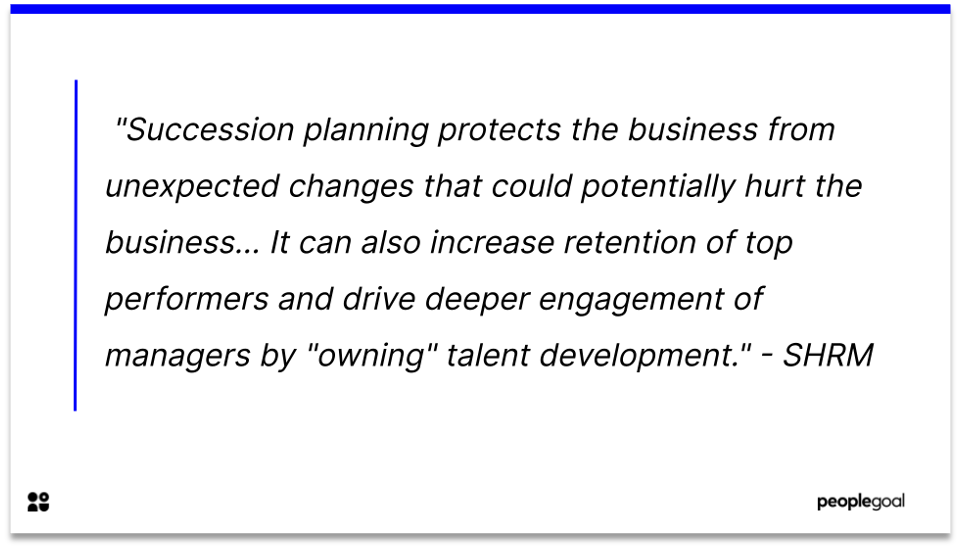
4. Business Goals
By setting clear business goals you can effectively align employee and company goals to ensure they both correspond. Once business objectives are identified, this allows the strengthening of succession and employee development plans by giving them more direction and benefit for the company.
5. Check-ins
By your managers setting a flexible weekly or monthly check-in with your employees, it maintains a strong line of communication. This promotes the identification of an employee’s progress. Acknowledgement of successes in terms of completing goals and accomplishments should occur regularly to maintain motivation.
The discussion of difficulties faced should help with the continual adjustment of goals to make them more manageable. The setting of new goals as the employee develops, should also occur here.
Employee Development: Strengthen your business through your employees 🏢
Employee development is a key way in making your business reach its goals as effectively as possible. By offering opportunities for an employee to learn and gain new skills you are doing the same for your business. This also improves the employee-employer relationship by them feeling supported and wanted through your use of resources. This in turn reduces employee turnover – saving you money in the long run.
Ready to 3x Your Teams' Performance?
Use the best performance management software to align goals, track progress, and boost employee engagement.

